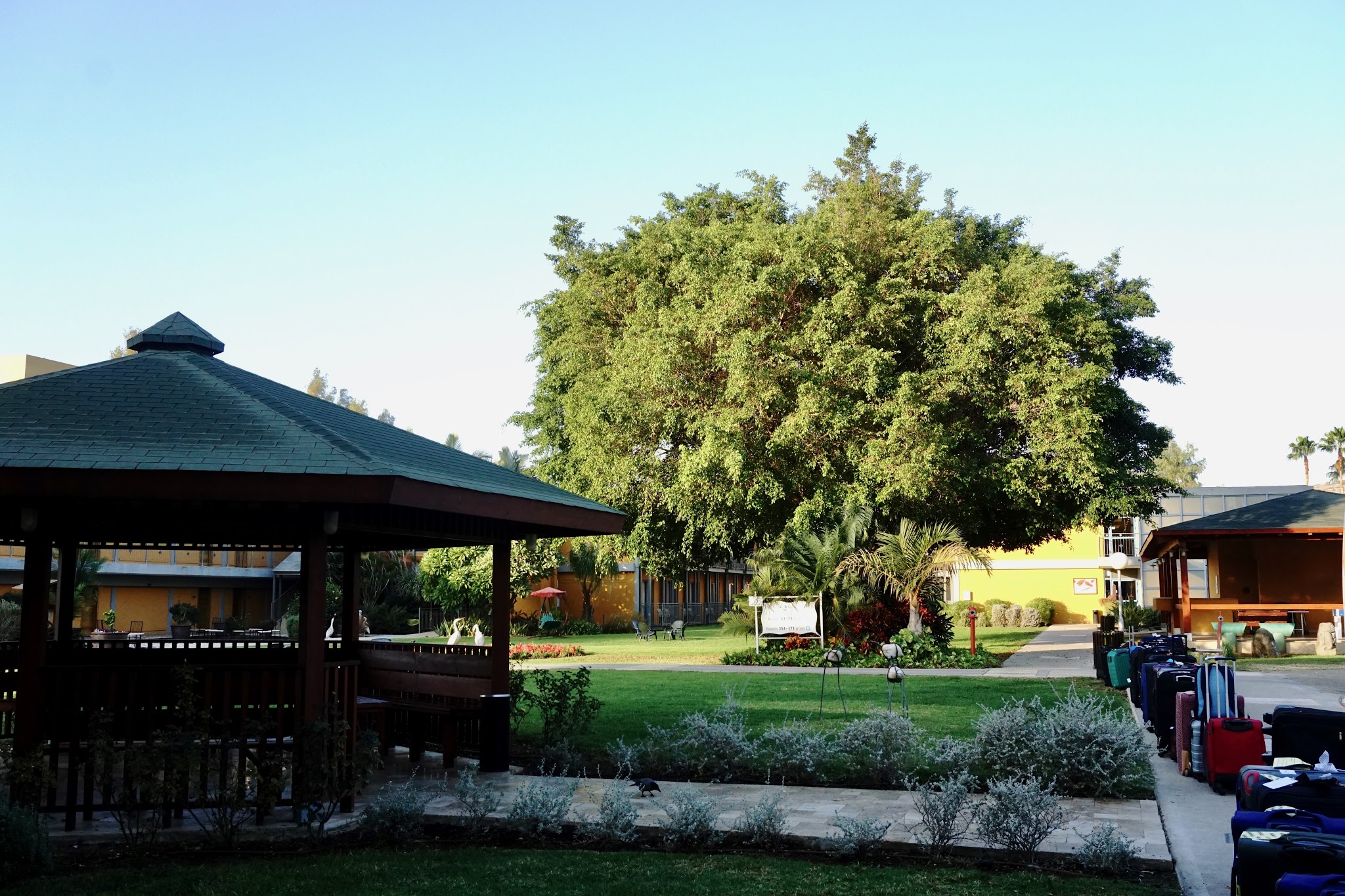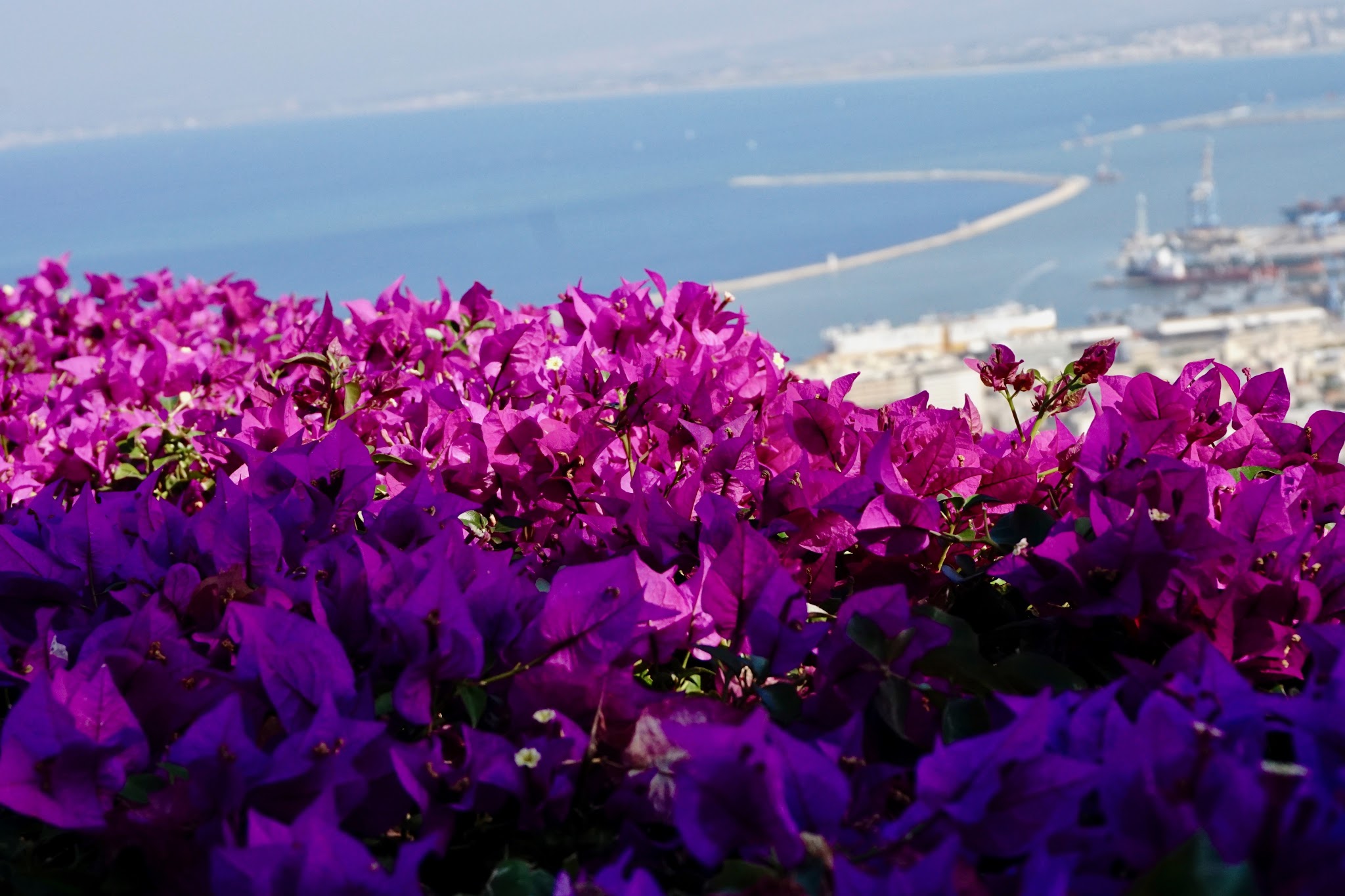Today was another incredible day in Israel. We woke up and ate breakfast before heading to the bus to leave Galilee. Our first stop of the day was Nazareth. We read about when Jesus taught in the synagogue in Nazareth and the people didn't believe that he could be the Savior and wanted to stone him. We were sitting by a Church called The Church of Our Lady of the Fright, named after the feeling Mary must have felt when she thought they might stone her son.
 |
| Our hotel in Ginosar. The hotel is part of a kibbutz. |
 |
| The Church of Our Lady of the Fright |
 |
| Modern Nazareth |
 |
| The Church of Our Lady of the Fright |
After Nazareth, we went to Haifa. Haifa has some beautiful gardens and was right on the coast. We took a walk and discussed how proselyting to Jews is considered a type of antisemitism because it's seen as Christians needing to "save" the Jews. Although the church had missionaries in Israel into the late 1800s, they have not had missionaries in recent history. A group of Jews attempted to pass a law to make it illegal to proselyte in Israel, but it was unsuccessful. Instead, they asked churches to voluntarily say they wouldn't proselyte. When the Church was building the Jerusalem Center both President Holland and President Hunter signed agreements saying that they wouldn't proselyte or do any activity that would affect Jewish culture. The Church honors this agreement by not sending missionaries and forbidding the students at the Jerusalem Center from talking to locals about our religion.
 |
| The City of Haifa |
 |
| Haifa |
After Haifa, we journeyed to Caesarea, one of my favorite places. Caesarea is right on the beach and King Herod built an artificial harbor in Caesarea to entice people to leave their ships for the winter to be closer to the main trade ports after the winter ended. Caesarea was a grand harbor in ancient and Byzantine times. Caesar built a palace with a swimming pool that was filled with water from the Mediterranean Sea. They also had a hippodrome right on the beach where there would be horse races, chariot races, and gladiator contests.
 |
| The aqueduct at Caesarea |
 |
| The Mediterranean Sea |
 |
| So happy |
 |
| Can't wait for the waves |
 |
| The water was colder than she expected |
 |
| The ruins of Herod's palace at Caesarea. He had a natural pool built into the rock. |
 |
| A stone referencing Pilate. It is the only reference to Pilate outside of the bible. |
 |
| Ruins at Caesarea |
 |
| Ruins at Caesarea |
 |
| Ruins at Caesarea |
 |
| Blake and Alison act like they are watching a gladiator fight in the ruins of the hippodrome |
 |
| The Mediterranean Sea |
 |
| Ruins at Caesarea |
 |
| The ruins of the hippodrome at Caesarea |
 |
| Ruins at Caesarea |
When Paul was tried and sent to Rome, he left from Caesarea. We read in Acts 26 where Paul talks to Agrippa and pleads his case and talks about how he became converted to Christ. He was one of the last apostles before the great apostasy and knew that he had to leave enough light burning that the gospel could one day be restored with all of the priesthood keys and organization of the primitive church. It was interesting to think about the apostasy and all the keys being removed from the earth for 1800 years of history. I'm so grateful to live at a time when the gospel has been restored. Also - the Mediterranean Sea is beautiful!
When I was a student at the BYU Jerusalem Center I wrote that I loved Eric in the sand at the beach in Caesarea. It seemed only appropriate to do it again.
After Caesarea, we visited Jaffa. Jaffa was where Jonah fled after being commanded to preach to Nineveh. We focused on Jonah 2:8, which reads "They who observe lying vanities forsake their own mercy." We talked about why it took Jonah 3 days to pray after being swallowed and it may have been because he felt unworthy or he was deserving of his punishment and this "lying vanity" caused him to not seek Mercy. Once he asked for mercy, he was saved. In a way, the whale may not have been as much a punishment as it was a salvation for Jonah because of the lesson he learned.
 |
| A statue of a whale commemorating Jonah in Jaffa |
We also discussed Peter because he received the vision regarding eating non-kosher food in Jaffa and from this vision, he determined that he should teach Gentiles the gospel instead of staying with just the Jews. This was significant because even Jesus did not teach Gentiles until after his resurrection in the New World. Teaching the Gentiles ensured that enough "light" would be left in the world after all the apostles were killed. The church on this site was really beautiful with light colors and a painting that depicted Peter's vision that allowed him to teach the Gentiles.
 |
| St. Peter's Monastery. This church commemorates when Peter began preaching the gospel to the gentiles at Jaffa. |
 |
| Inside St. Peter's Monastery |
 |
| St. Peter's Monastery |
 |
| A zodiac fountain |
 |
| St. Peter's Monastery |
 |
| St. Peter's Monastery |
 |
| Sunset in Jaffa |
After Jaffa, we headed up to Jerusalem. It was a great day in Israel!


















































Comments
Post a Comment